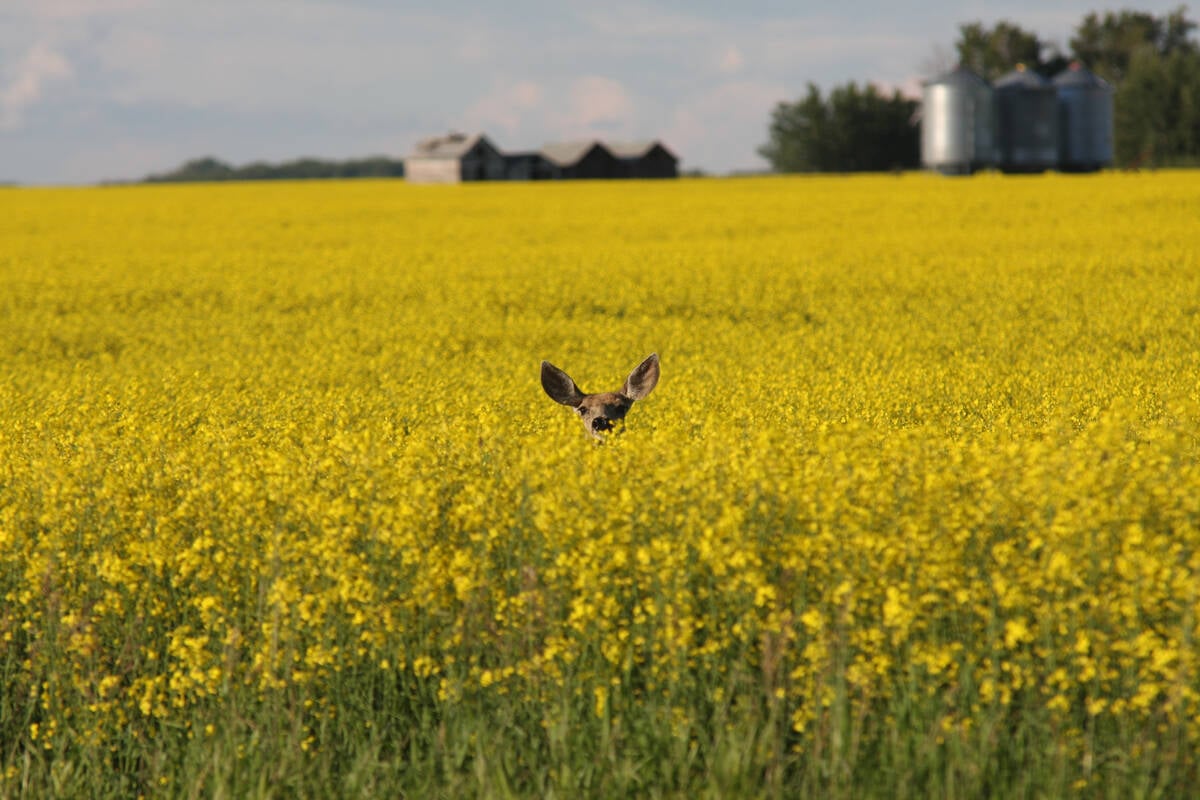Brad Andres wants producers to make sure they know what to do if a fire comes close to their farm or acreage.
Andres, who is emergency program manager with Alberta Agriculture, said one of the biggest lessons learned from the Slave Lake fire, which burned one-third of the houses in the northern Alberta town in 2011, was that there is little time to react and respond once a fire begins.
“There has always been issues with fires, but in recent years fires seem to be getting larger and coming upon us faster,” said Andres, who wants to help farmers and acreage owners become aware of their fire risk.
Read Also

Drones now used to assess wildlife crop damage in Saskatchewan
Wildlife damage in Saskatchewan crops is now assessed by drones and artificial intelligence.
He said people believe they would have time to pack up valuables and load livestock if a fire were near.
However, all the big fires of recent years seemed to have a large wind that quickly pushed the fire forward.
“With climate change, it seems like winds are stronger and the fire starts and runs really quick.”
Humans cause half the wildfires in Alberta, while the other half are caused by lightning and can travel at an astonishing speed. Crowning wildfires can spread at seven km-h and can send embers as far as two kilometres ahead of the fire. Wind-blown prairie fires can travel more than 10 km-h.
Andres said the key to fire safety in rural areas is to know the risk.
Farmers in southern Alberta and grassland areas should mow the grass around their buildings or have a firebreak to slow the fire. Farms in treed areas need to clear much of the dead underbrush to slow the fire.
Farmers have three options in case of a fire:
- Shelter in place: soak down an area and create a firebreak around the yard and animals.
- Plan to evacuate: If there is sufficient time, take family and animals to a safe place.
- Release the animals: Loading all the livestock may not be possible if producers receive little or no warning or if they have a large number of animals. One option is to open all the gates and doors to give the animals a chance to find safety on their own.
“Farmers need to know where their animals are,” said Andres.
Pork and chicken producers don’t have the option of loading up all their animals in case of a fire. Instead, farmers need to create fire barriers around barns using gravel or mowed grass.
“The best management practices around biosecurity also create barriers for fire,” he said. “Good yard maintenance takes a lot of the risk away.”
Andres also suggests following guidelines in Alberta Sustainable Resource Development’s Fire Smart manual.














